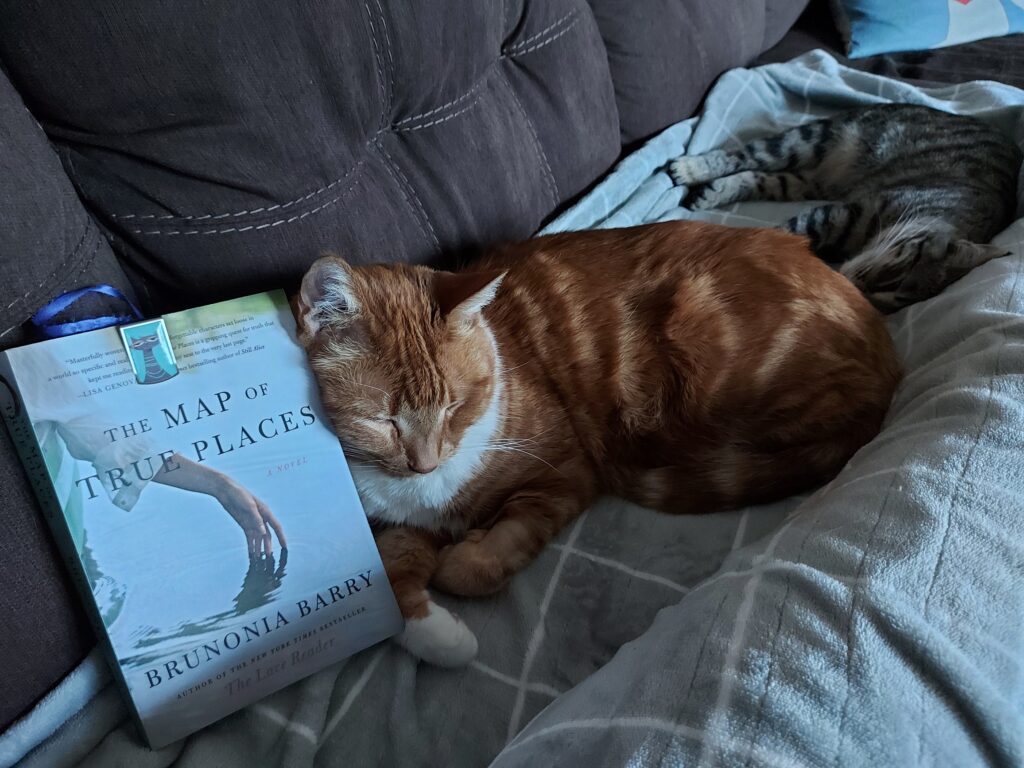The Map of True Places by Brunonia Barry

I really enjoy Brunonia Barry’s novels, The Lace Reader, The Map of True Places and The Fifth Petal. All three novels are set in and around Salem, Massachusetts, and are loosely interconnected by the characters that appear in each novel. Salem’s history of witches features prominently in the novels, but the novels do not lean too much into the occult or the mystic. As much as I do appreciate supernatural stories, I like that Barry’s novels are grounded in reality, so that when uncanny things do happen, they can be written off as coincidence. Barry’s novels focus on complicated relationships, and each one involves a protagonist who must confront the painful and traumatic events from their past. The Map of True Places is Barry’s second novel, but it is the third one that I have read. These novels do not have to be read in order to be appreciated, and they can each be appreciated on their own (meaning, this is not a series where you have to read each and every novel to understand what is going on).
The Lace Reader is about an unreliable narrator named Towner Whitney who comes from a family of Salem women who can read the future in the patterns in lace. Towner returns to Salem after many years away and is forced to confront a trauma from her past involving the death of her twin sister. The twist in The Lace Reader is one that I definitely did not see coming. The Fifth Petal is more of a murder mystery about the investigation of a possible connection between the death of a teenage boy on Halloween night and a cold case from decades before, “The Goddess Murders”, where three women who were all descended from accused Salem witches were also murdered on Halloween night. I loved the twist and turns in this novel, and it leans more heavily into the supernatural.
The Map of True Places kind of falls between the other two novels. The protagonist, psychotherapist Zee Finch, returns home to Salem to take care of her ailing father and is forced to confront the trauma of her mother’s suicide that occurred when she was a child. Zee is also reeling from the recent suicide of one of her patients, and she is not sure that she believes her patient meant to take her own life. The patient was having an affair at the time she died, and Zee is convinced that the patient’s lover was involved with her death. Zee wants to investigate his role in the patient’s death even though he is dangerous.
Zee’s father has Parkinson’s disease and is starting to develop Alzheimer’s. Zee does not have a very close relationship with him. After her mother’s death, Zee and her father drifted apart to do their own things, which for Zee meant running around at night stealing boats. After a couple of years, Zee’s life stabilized when her father’s boyfriend, Melville, moved in with them. At the beginning of the novel, Zee’s father has kicked Melville out of the house. Neither her father nor Melville will tell her why, although the reason is eventually revealed to the reader.
After moving back into her childhood home, Zee comes across an unfinished manuscript of her mother’s, a love story based on the “true” story of a woman who used to live in Zee’s house and was married to a cruel man, before she falls in love with a sailor. The woman and the sailor disappear, and no one knows what really happened to him, which is why Zee’s mother never finished her manuscript. Zee begins dating a man while she is Salem, and this is where The Map of True Places crosses over into the mystic, because her relationship with this man somewhat mirrors that of the lovers from her mother’s manuscript. It also leads the novel to having a bit of a contrived ending, but at least it is not a disappointing one.
Zee Finch is, thankfully, not a frustrating protagonist. She knows when she needs help, with her father and her own feelings, and she seeks it. She does not push people away or ignore advice and do reckless things. Zee realizes she has given herself over to doing whatever everyone expects of her. This novel is about her breaking free of that, which includes recognizing she is in a toxic relationship and ending it. She is a rational protagonist, something that is lacking in most works of fiction; she, and The Map of True Places, get my seal of approval.